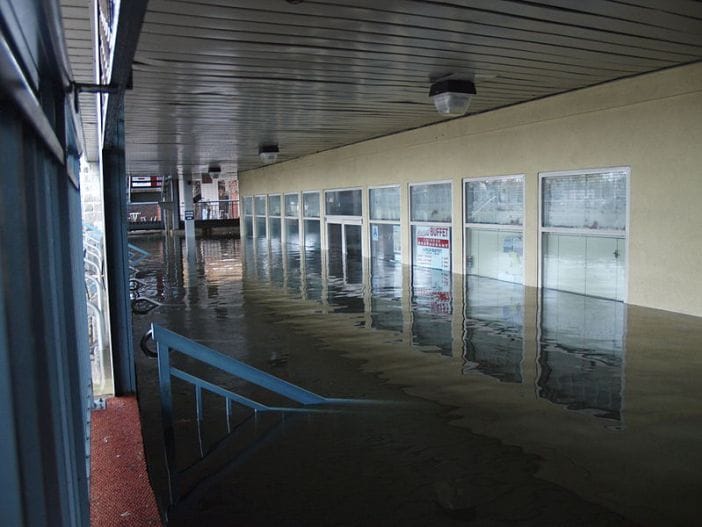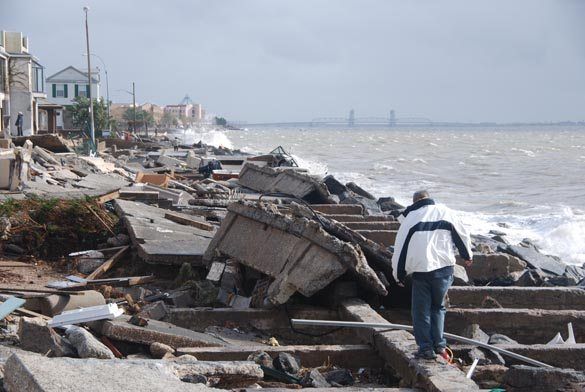Seven Years Since Hurricane Sandy And Southern Brooklyn Is Not Prepared


Hurricane Sandy slammed into Brooklyn in 2012. It caused 43 deaths and $19 billion in widespread devastation. Seven years later, the effects of the storm still linger. Though much work was done and promises were made, some weren’t kept and some weren’t enough.
In September, we asked the Mayor’s Office if the city was resilient. Jainey Bavishi, the Director of the Mayor’s Office of Resiliency told us that it was more resilient than ever.
“We’re bolstering New York City’s defenses against climate threats with a bold and unprecedented $20 billion resiliency plan,” Bavishi said. “There is no quick fix for the risks we face, but the City’s efforts have already made New Yorkers safer and will continue to ensure that our neighborhoods, economy, and public services will be ready to withstand and emerge stronger from the impacts of climate change.”
Local politicians don’t seem to think so, and we wrote all about it here. In fact, to discuss how unprepared the city is for the next hurricane, Council Member Justin Brannan led the first hearing by the Council Committee on Resiliency and Waterfronts this afternoon.
“As Chairman of the Council’s Committee on Resiliency and Waterfronts it is my job to hold the City’s feet to the fire to ensure we are doing everything we possibly can and as quickly as possible to get our city ready to mitigate all of the devastating effects of extreme weather events, climate change and coastal sea rise,” Brannan told Bklyner. “I defy anyone to tell me New York City is ready for the next Hurricane Sandy. I don’t take any pleasure in being right. I want to be wrong but I know I’m not. It’s seven years later and we’re still talking about studies and sandbags.”
Last week, State Senator Andrew Gounardes led a town hall on Climate and Resiliency to discuss how there is tons of work left to be done in Southen Brooklyn to prepare for another storm.
“Today marks seven years since Hurricane Sandy. As we discussed at my recent Climate and Resiliency Town Hall, though New York State now leads with groundbreaking climate legislation, we have a long way to go to ensure that we are prepared and resilient–especially in our coastal communities,” Gounardes told Bklyner. “We urgently need to address this, because we can’t afford the catastrophic damage that resulted from Sandy again.”
City Council Speaker Corey Johnson took to Twitter to share his thoughts which echoed the above.
“Seven years ago, Hurricane Sandy wreaked havoc on our city. I remember that day and the hard days that followed,” he Tweeted. “In true NYC fashion, we helped each other then and we will continue to help our communities still recovering. We’ll stay strong for one another as we continue to rebuild.”
“Knowing what we know about the severity of the climate crisis, we need to be doing so much more to prepare for the inevitable superstorms to come, and I support researching every possible solution,” he continued.
Council Member Brad Lander, whose district was impacted by the storm, also took to Twitter to share his thoughts on the seven years after Sandy.
“Seven years after Hurricane Sandy, I’m still inspired by the radical potential of our ability to come together to help each other,” he said. “But we are not where we need to be in order to be ready for the next storm & to respond on the scale of the collective, existential crisis we face.”
NYC Comptroller Scott Stringer (who’s running to be the next mayor), penned a letter to Mayor Bill de Blasio asking him to detail specific steps “taken to reform emergency preparation plans and spotlighting breakdowns in the City’s response to Superstorm Sandy that left NYCHA residents more vulnerable, stalled recovery efforts, and jeopardized vital services.”
Stringer told Bklyner, “We must not forget what happened and the lessons we need to learn.”
“Despite the urgent threat of climate change, we haven’t done nearly enough to safeguard our communities from the next big storm. We need a comprehensive, citywide approach to protect all 520 miles of New York City’s shoreline – not just Wall Street,” he said. “It’s time to accelerate the pace of investment in resiliency projects, develop a comprehensive coastal resiliency plan, and preserve naturally-resilient areas such as wetlands and swamps to prevent future flooding. We can’t leave this crisis for the next generation to solve—it’s up to us to take action now.”
Council Member Mark Treyger, whose district was also severely impacted by the hurricane, detailed all the ways in which progress was made (in housing, infrastructure, hospitals, green space, schools, legislation, small businesses, workforce development, houses of worship, and resiliency) and the ways in which the city lacks preparedness.
For the next steps, he listed:
- Ensuring NYCHA, Health + Hospitals, and other agencies successfully complete vital recovery efforts in a timely manner.
- Ensuring local communities have a say and help shape the federal resiliency study to have a solid regional protection plan.
- Ensuring Congress helps fund an infrastructure bill that incorporates resiliency funding for Southern Brooklyn to better protect life, property, and affordability.
- Learning the lessons of the many painful bureaucratic failures during Sandy recovery. One such example is granting flexibility to organizations like Habitat for Humanity to take on greater housing recovery caseloads.
- Supporting policies lowering the city’s carbon footprint and reducing impacts that exacerbate climate change.
- Supporting public schools in building capacity to prepare a future green-tech workforce.
“We are better informed after Superstorm Sandy, but not fully prepared for the next big storm. We have a lot of work to do and over 8.6 million reasons to get it right,” he said. “I’m proud of the major work we accomplished together, but we must remain steadfast in making our neighborhood and city more resilient.”




